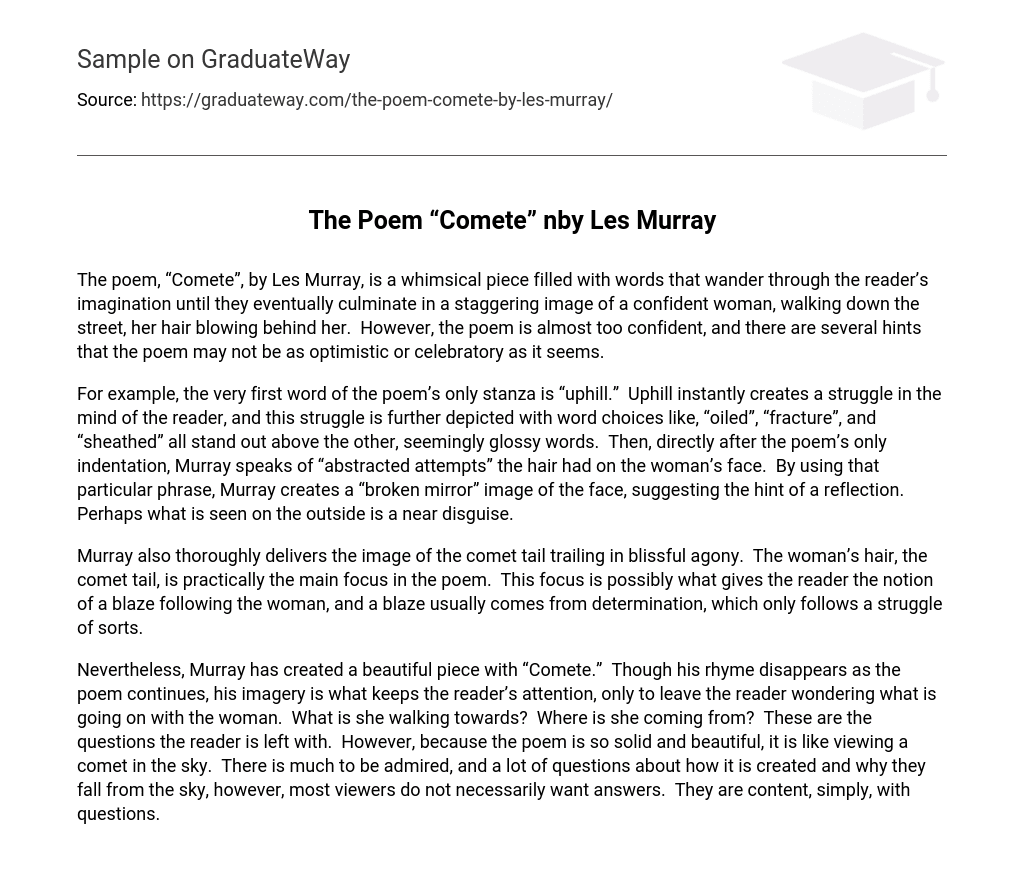The poem, “Comete”, by Les Murray, is a whimsical piece filled with words that wander through the reader’s imagination until they eventually culminate in a staggering image of a confident woman, walking down the street, her hair blowing behind her. However, the poem is almost too confident, and there are several hints that the poem may not be as optimistic or celebratory as it seems.
For example, the very first word of the poem’s only stanza is “uphill.” Uphill instantly creates a struggle in the mind of the reader, and this struggle is further depicted with word choices like, “oiled”, “fracture”, and “sheathed” all stand out above the other, seemingly glossy words. Then, directly after the poem’s only indentation, Murray speaks of “abstracted attempts” the hair had on the woman’s face. By using that particular phrase, Murray creates a “broken mirror” image of the face, suggesting the hint of a reflection. Perhaps what is seen on the outside is a near disguise.
Murray also thoroughly delivers the image of the comet tail trailing in blissful agony. The woman’s hair, the comet tail, is practically the main focus in the poem. This focus is possibly what gives the reader the notion of a blaze following the woman, and a blaze usually comes from determination, which only follows a struggle of sorts.
Nevertheless, Murray has created a beautiful piece with “Comete.” Though his rhyme disappears as the poem continues, his imagery is what keeps the reader’s attention, only to leave the reader wondering what is going on with the woman. What is she walking towards? Where is she coming from? These are the questions the reader is left with. However, because the poem is so solid and beautiful, it is like viewing a comet in the sky. There is much to be admired, and a lot of questions about how it is created and why they fall from the sky, however, most viewers do not necessarily want answers. They are content, simply, with questions.





